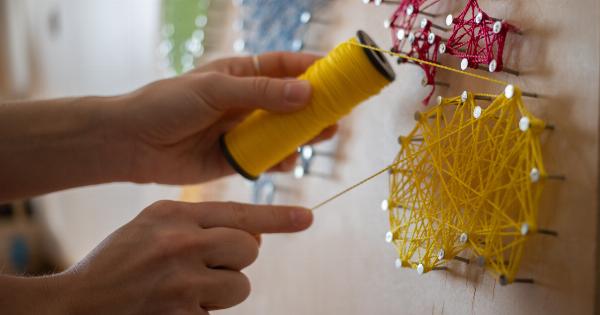Your nails may seem like small and insignificant parts of your body, but did you know that they can offer valuable insights into your overall health? From the color and texture to the shape and size, your nails can indicate any number of underlying health conditions. In this article, we will explore the mysteries of your nails and uncover what they can reveal about your health.
What Are Nails Made Of?
Before we delve into the clues that your nails can offer, let’s first take a look at what nails are made of. Your nails are made up of a protein called keratin. Keratin is the same protein that makes up your hair and the outer layer of your skin.
The nail itself is composed of three main parts:.
Nail Anatomy
The first part is the nail plate, which is the visible part of the nail that grows out from the nail bed. The second part is the nail bed, which is the skin underneath the nail plate.
The nail bed contains blood vessels and nerves that supply the nail with nutrients and sensation. The third part is the matrix, which is the area at the base of the nail where new cells are created. The matrix is responsible for nail growth.
What Do Healthy Nails Look Like?
Healthy nails are smooth and have a consistent color, texture, and shape. They should be strong and not easily broken or chipped. The tips of your fingers and toes should be pink, indicating good blood circulation.
Your cuticles should be neat and free from any signs of infection or inflammation.
What Can Your Nails Reveal About Your Health?
Your nails can offer a range of clues about your health. Here are some common nail changes and what they may indicate:.
1. Discolored Nails
If your nails are discolored, it could be a sign of an underlying health condition. For example, yellowish nails can be a sign of a fungal infection, while blue nails can indicate poor circulation or a lack of oxygen in the blood.
In some cases, discolored nails can even be a sign of liver, lung, or heart disease.
2. Brittle Nails
If your nails are brittle and easily break or chip, it could be a sign of a deficiency in certain vitamins and minerals, such as biotin, vitamin D, or calcium. Your nails rely on these nutrients to stay strong and healthy.
Brittle nails can also be a sign of an underactive thyroid or anemia.
3. Ridges and Grooves
Ridges and grooves on your nails are a common sign of aging, as the production of new cells in the nail matrix slows down over time. However, they can also be a sign of an underlying health condition, such as psoriasis or anemia.
4. White Spots
Contrary to popular belief, white spots on your nails are not necessarily a sign of calcium deficiency. They are actually caused by trauma to the nail, such as hitting or pinching your finger. White spots can also be a sign of a fungal infection.
5. Spoon-Shaped Nails
Spoon-shaped nails, where the nails are concave and curve upwards, can be a sign of a condition called iron-deficiency anemia. This condition is caused by a lack of iron in the blood, which can affect the shape and texture of your nails.
6. Clubbed Nails
If your nails are thickened and curved around the fingertips, it could be a sign of a condition called clubbing. Clubbing can be a sign of lung disease or heart disease, as the body tries to compensate for a lack of oxygen in the blood.
7. Dark Lines
Dark lines or streaks on your nails can be a sign of melanoma, a type of skin cancer. If you notice any dark lines on your nails, it is important to see a doctor for an evaluation.
Conclusion
Your nails may seem like small and insignificant parts of your body, but they can offer valuable clues about your overall health.
By paying attention to the color, texture, and shape of your nails, you can spot any changes that may indicate an underlying health condition. If you notice any changes in your nails, it is important to seek the advice of a doctor. A simple nail exam can help to uncover potential health concerns and ensure that you are taking the necessary steps to maintain your overall health and well-being.































